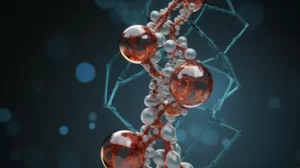Stem cells possess unique regenerative abilities, allowing them to replace damaged cells and keep our bodies functioning. As we age, the number and efficiency of our stem cells start to decrease, making it more difficult for our bodies to heal and recover. For many years, stem cell therapy has been touted as a potential treatment for a wide range of conditions, including spinal cord injuries, multiple sclerosis, cancer, heart disease, Parkinson’s disease, and Alzheimer’s disease.
While stem cell therapy has shown some promising results, it is still largely out of reach for most people. With that said, there’s a natural, safe, and easily accessible way to improve the health of your stem cells: vitamin B9, also known as folate or folic acid.
Folate and Your Stem Cells
Folate is already well-known for its many health benefits. It helps prevent birth defects, heart disease, and various types of cancer (including colon, breast, cervical, pancreatic, and stomach cancer). Recently, researchers from the University of Georgia and Tufts University discovered that folate also encourages the production of stem cells in a whole food source, stimulating stem cell division.
While this study was conducted on roundworms, it provides a promising starting point for exploring the role of folate in human stem cell production.
How to Get More Folate in Your Diet
The current recommended daily dosage of folate is 400 mcg per day for adults. You can easily achieve this amount with a balanced diet that includes folate-rich foods such as:
- Spinach
- Asparagus
- Avocado
- Brussels sprouts
- Salmon
- Root vegetables (e.g., carrots, sweet potatoes, and turnips)
- Kidney beans
- Lima beans
Other Ways to Boost Stem Cell Production
In addition to incorporating more folate into your diet, there are several other strategies that can help promote stem cell production. Here are three research-backed activities that can contribute to a healthier, more youthful future:
Weight Lifting
Exercise, especially weightlifting, has been shown to boost stem cell production. Researchers from the University of Illinois found that engaging in resistance training exercises led to an increase in stem cells in muscle tissue. Weightlifting physically challenges your muscles, causing them to break down and rebuild themselves. To support this process, your body draws on its reserves of stem cells, prompting them to multiply.
Fasting
Intermittent fasting or caloric restriction has also been linked to increased stem cell production. A study published in Cell Stem Cell found that fasting for two to four days at a time led to reduced levels of a protein called IGF-1, which inhibits stem cell production. By keeping IGF-1 levels low, fasting appeared to promote the regeneration of immune cells and stem cells in the bone marrow. Although fasting can be challenging and may not be suitable for everyone, it may offer significant benefits for those who can safely incorporate it into their lifestyle.
Tai Chi
This ancient Chinese practice that focuses on slow, deliberate movements, has been found to rejuvenate stem cells. In a study conducted by a group of Taiwanese researchers, participants who practiced Tai Chi for a year showed a marked increase in the number of stem cells in their bloodstream. The researchers believe that Tai Chi’s gentle, low-impact nature may encourage the production of these vital cells, making it an ideal complement to other forms of exercise.
Conclusion
While we may not have access to advanced stem cell therapies just yet, there are plenty of natural methods available to help support our body’s regenerative abilities. By incorporating more folate into your diet and engaging in activities such as weightlifting, fasting, and Tai Chi, you can give your stem cells a much-needed boost, leading to a healthier, more youthful you.



